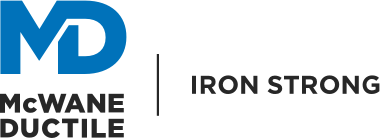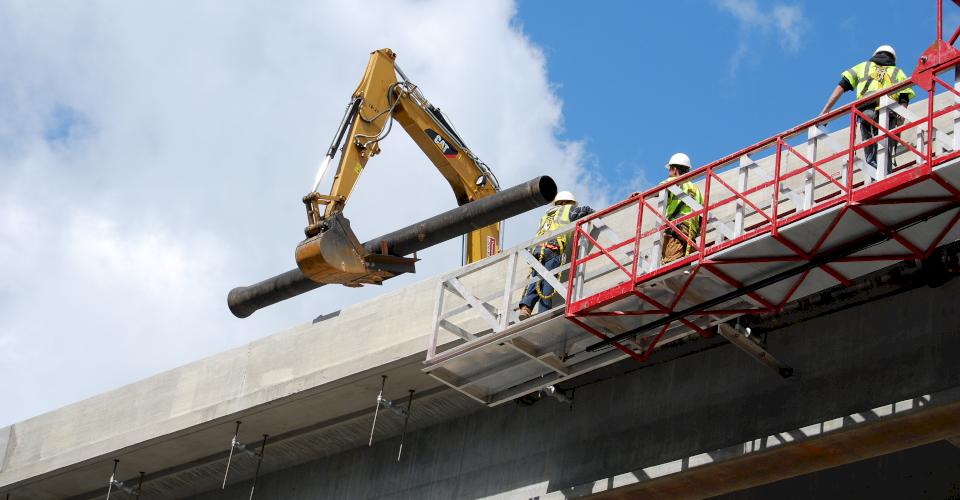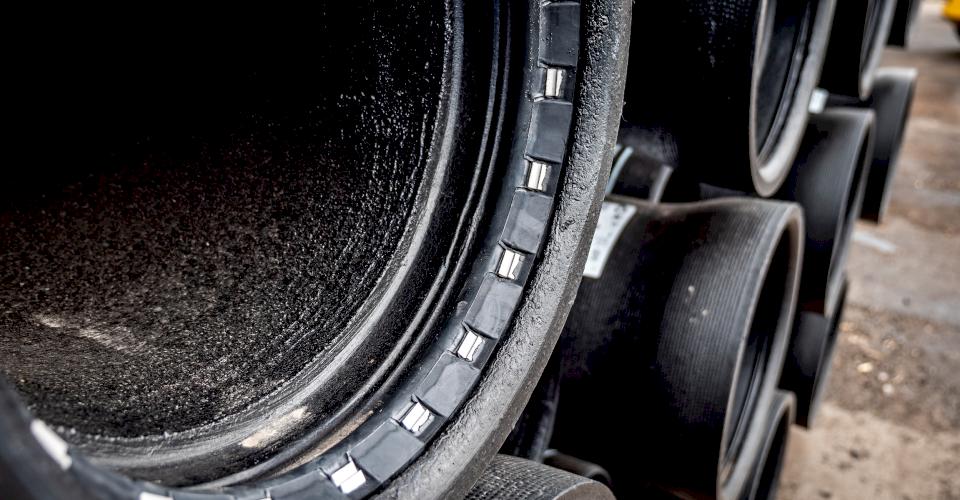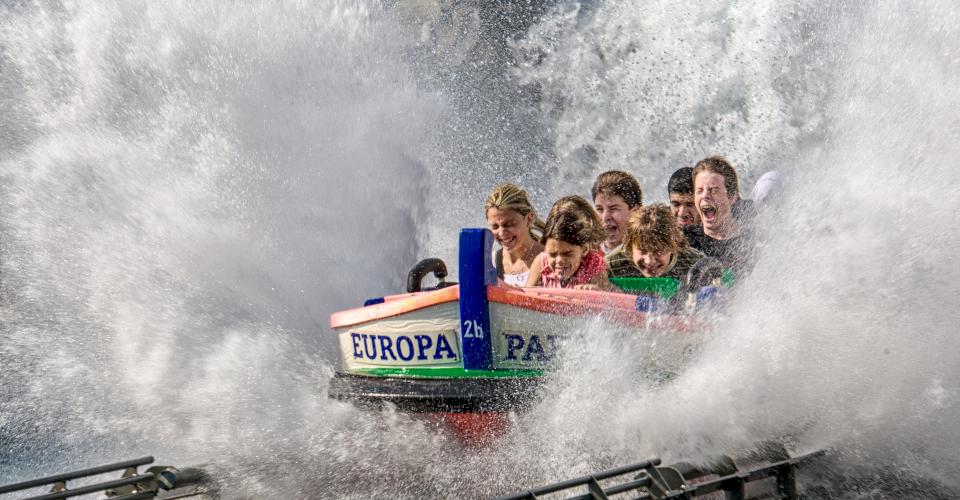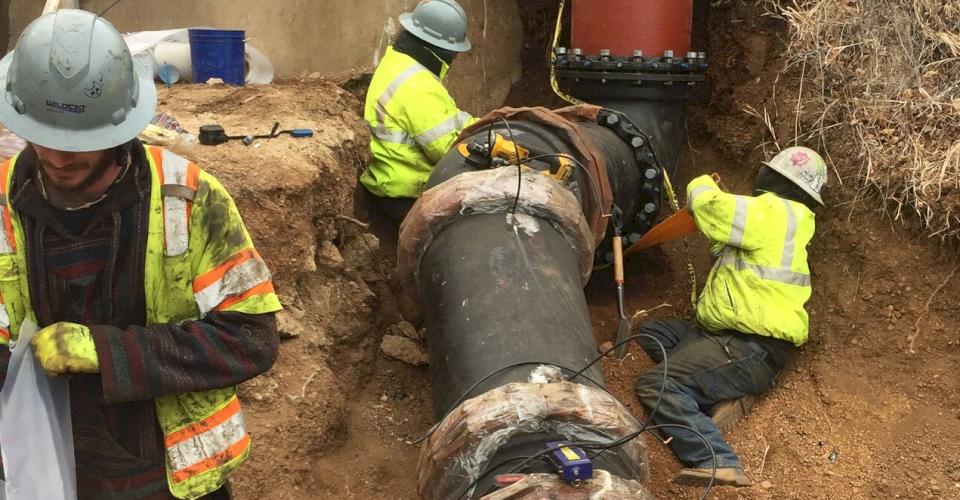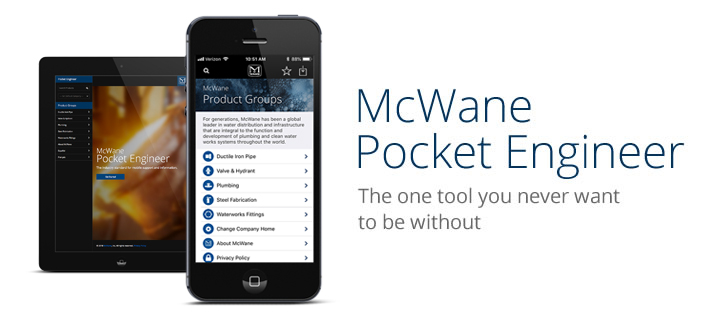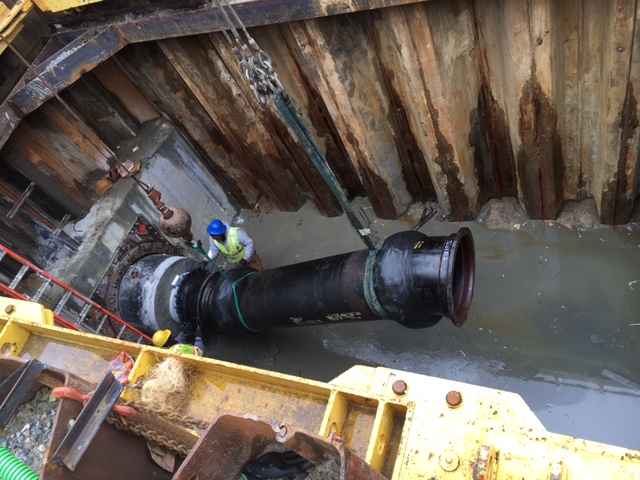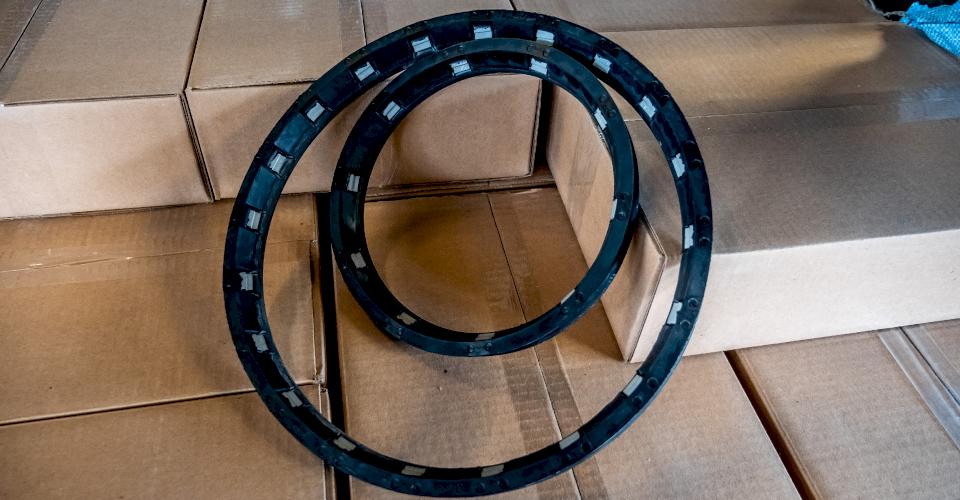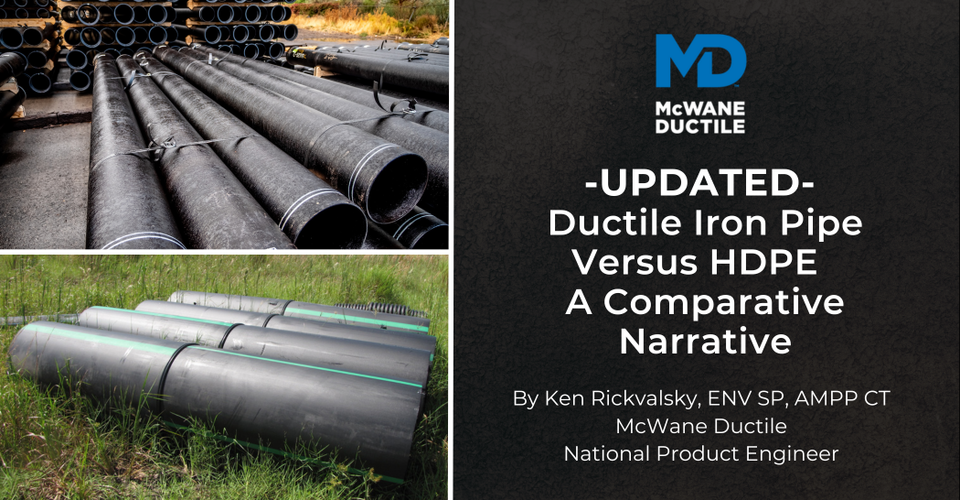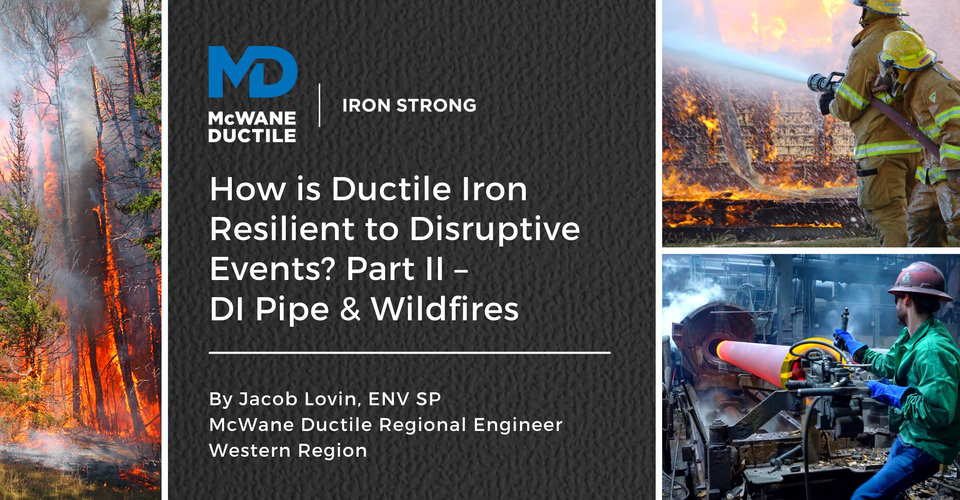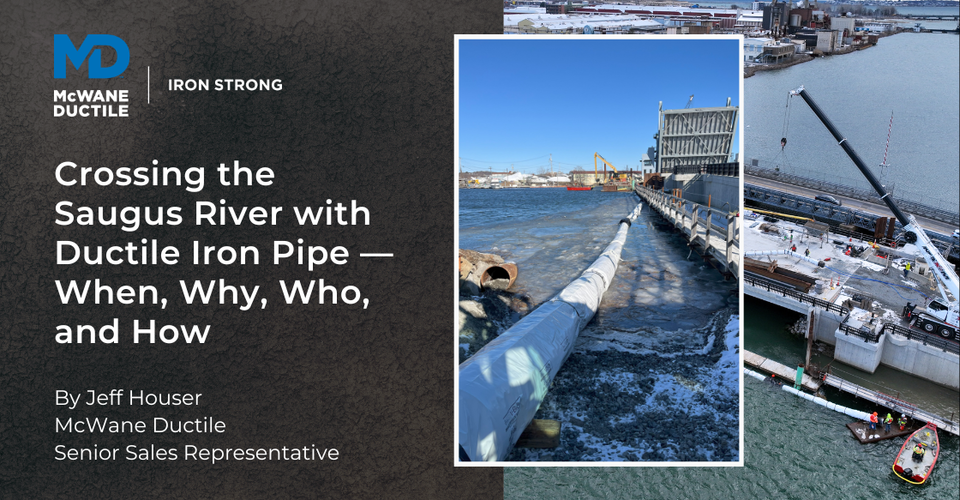Gaskets Are Great
Rubber gaskets are the reliable workhorse of any Ductile iron pipe (DI pipe) joint. They provide long-lasting flexibility and a watertight seal against internal pressures upwards of 1,000 psi.
What they don’t do, however, is bind the joint longitudinally against such forces. In fact, without assistance from other variables, a push-on or mechanical joint of any diameter would calmly separate lengthwise against pressures as low as 50 psi.
In most pipe joints, the spigot end buries and sets into the bell approximately 2 or 2 1/2 inches past the compressed gasket The weight of the pipe, including its contained fluid, along with the trench backfill in contact with the pipe, and associated soil-to-metal friction all play a part in stabilizing the pipe joint against internal forces.
When the internally generated thrust forces, caused by fluid transport and directional changes in the pipeline, exceeds the “natural forces” mentioned previously, the solution is simple and sure … RESTRAINED pipe and fitting JOINTS.
What's It All About?
From examples we have discussed previously, think of how you feel when riding a roller coaster or log flume ride that suddenly juts left and up after a quick, downhill thrill! You feel as if all things are being thrown to the right, and hard. The same thing happens from within a pipe carrying water or other fluids at each change in direction, especially so at fittings.
An old-fashioned remedy to this issue was to place blocks of poured concrete behind and against the fittings. The theory being that if the fitting is “controlled,” no adjacent joints in the pipeline are in jeopardy. This is a great idea, except today’s infrastructure spaghetti and pace of construction have minimized the effectiveness and tolerance for space-hogging and long-time-to-set thrust blocks being utilized.
The modern answer is RESTRAINED JOINTS for pipes and fittings instead of cumbersome thrust blocks. Each of the domestic DI pipe manufacturers has its own versions or what is commonly termed “proprietary restrained joint pipe”, and when the dust of discussion settles, they are essentially all the same. Each version can protect your pipeline from longitudinal separations up to a pressure rating of 350 psi, which with ductile iron systems, equates to a 900-psi working pressure.
Needs and Deeds
Restrained joint needs have been both over-estimated and under-done through the years because the design calculations were considered cumbersome and confusing, even to engineers. Early computer programs provided only one answer for one fitting for each set of input values, which helped, but did not eliminate the dread of design.
The McWane Pocket Engineer (McWane PE for short) can assist designers in these cumbersome calculations. Enter four simple known values of the pipeline (diameter, depth of cover, test pressure, and trench type) and do a full day’s work in just one click. There are other restrained joint calculators available on the APP market or internet today, but the McWane PE gives you more than one result at a time, and tailors the results precisely to the soil conditions you’ve chosen or defined.
The proven theory of restrained joint needs and designs is relatively simple. Consider yourself standing at one end of a long rope placed on the ground. Now pick up your end of the rope and repeatedly shake it violently in any or all directions you like. The resulting ripples and wiggles will be seen for some distance away and in various directions, depending upon how hard you rattle the rope.
This is exactly the effect that fluid flowing through a pipeline will have upon the pipes themselves, especially when passing through a “sudden change in direction”, i.e. a fitting. Simply stated, all pipe or fitting joints within that “wiggle zone” must be restrained or they could separate, even though they are buried.
Details, Please
Putting it in “pipeline terms”, if 100,000 lbs. of thrust force is developed internally by fluid movements, and the adjacent combination of pipe weights, earth loads, and frictional resistance with the trench soil accounts for 60,000 lbs. of “natural” resistance, then 40,000 lbs. (plus decided safety factor) must be “balanced out” or accommodated by the use of restrained joints.
This “balance” is spread over and away from the generating element by installing the computed result of “required restraint length” on each side of the epicenter (typically a fitting, such as a bend or tee). Based upon pipe diameter, working pressure, and other design factors, this could equate to one restrained joint on each side of the fitting, or several hundred feet of consecutive restrained joints on each side of the fitting.
Integrally-cast, extended bell restrained joint pipes, whether TR-Flex® from the McWane Ductile, or similar versions from other experienced DI PIPE manufacturers, provide the greatest degree of joint surety against sudden or steady thrust forces. They all work by “ring-on-ring”, “metal against metal”, longitudinally-locked arrangement in front of the compressed gasket in the same bell section.
This maintains the lengthwise integrity of the connections, while still allowing joint flexibility and deflections as needed. These joints have end-pull ratings and experiences equal to or greater than the pipe barrel itself, making them ideal for modern and environmentally considerate installations, such as HDD (Horizontal Directional Drilling) and PBR (Pipe Bursting Replacements). They are also ideal for aerial installations, such as bridge crossings, temporary bypass lines, and the like.
Back to Gaskets
A ready-set-go version of joint restraint is also available via the McWane Sure Stop 350® gasket, and its competitive counterparts from other DI pipe manufacturers. Vulcanized stainless steel segments with gripping ridges, located in the heel of the gasket bulb, produce a controlled bite into the exterior of the pipe barrel during the gasket compression produced in routine push-joint assembly.
This option permits on-the-fly adjustments in the field toward continuously restrained joint segment lengths, if needed, without ever waiting for a new or additional piece of foundry fabricated RJ pipe to be delivered. Simply substitute a restraining gasket in the pipe bell instead of the standard gasket, and you’ve got a fully restrained system, up to the next pipe bell.
It should be noted that segment-style restraining gaskets, such as Sure Stop 350® and their alternatives from competing manufacturers, provide only about a third (1/3) of the safe end-pull resistance of their as-cast counterparts. Consequently, they are not recommended for aerial or for other long-term unburied installations, especially where repetitive vibrations are anticipated or known (such as bridge crossings). In addition, they are not responsibly recommended for higher stress applications such as HDD or PBR installations.
One Last Thing...
All mechanical joint fittings, within any delineated restraint-joint zone of the pipeline, can easily be retrained as well with wedge action retainer glands, used in-lieu of standard accessories for those joints.
Often referred to as “megalugs,” these glands provide reliable high-pressure restraint to the fittings and their connections to the adjacent restrained joint pipes, without much damage potential to the pipes themselves.
Alternatively, you may also elect to use proprietary restrained joint fittings, such as TR Flex®, in your buried system. These fittings are simple to install, require less installation time, and are readily available in most standard fittings configurations (i.e. Bends, Tees, Sleeves and Reducers).
Given the innate strength and proven durability of DI pipes over time, factors that are typically detrimental to alternate materials, such as point loading and cyclic stresses, do not bother or diminish the resiliency of DI pipe restrained joint systems in any way.
That’s just another known and proven benefit to enhance the reliability and options afforded by the ultimate utility option…DUCTILE IRON PIPE.
Need assistance with your water infrastructure project?
McWane Ductile offers multiple services for our customers extending far beyond manufacturing ductile iron pipe. From design to installation, we take great pride in providing education and assistance to water professionals throughout the water and waste water industry.
Check out all our digital offerings:
